Experts say seaweed farming could be a viable and lucrative addition to fisheries in Goa, India
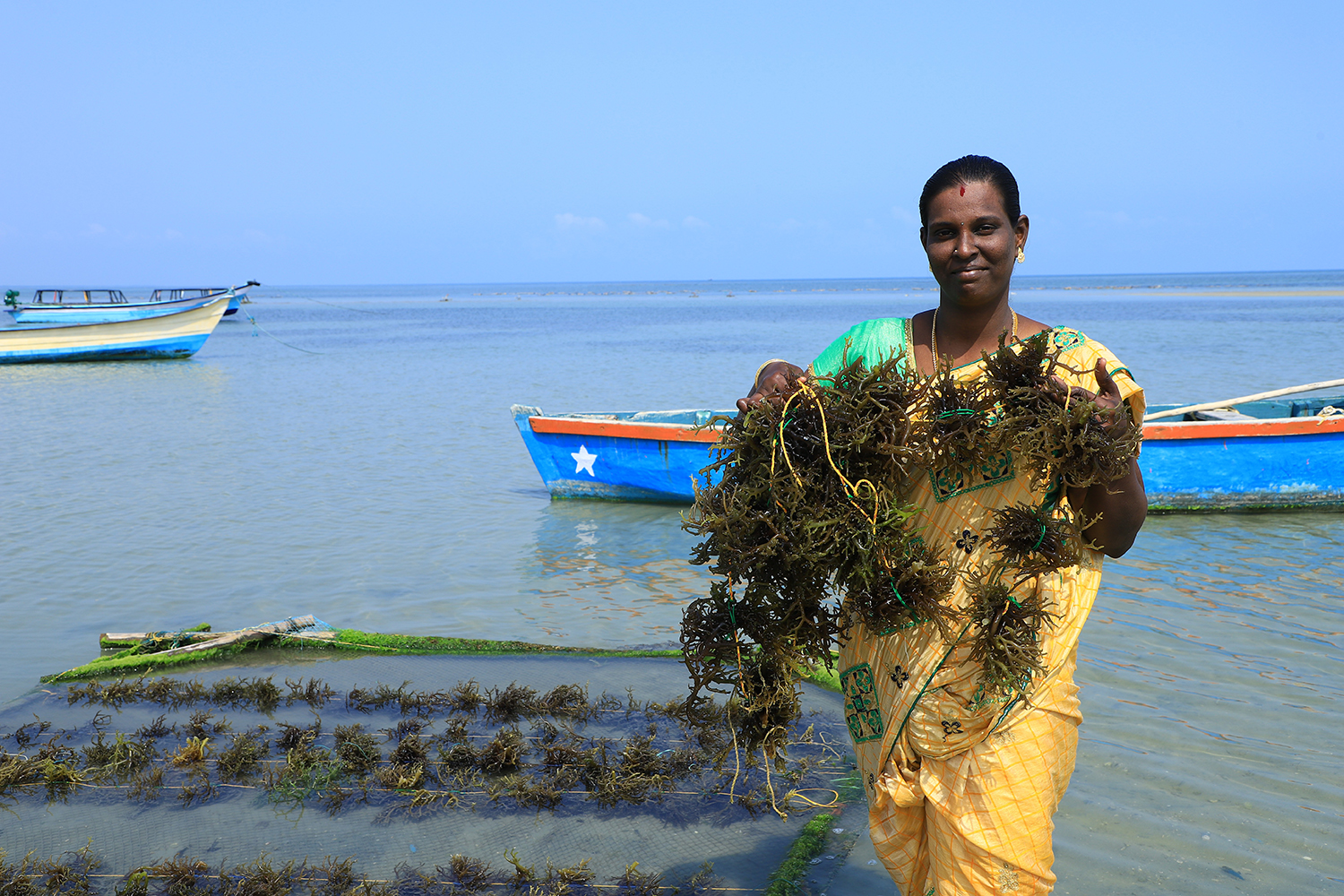
Seaweed has been gaining global recognition as a wonder plant of the ocean. It supports marine biodiversity by acting as breeding and feeding grounds. It absorbs carbon, de-acidifies the ocean and soaks up excess nutrients that could cause harmful algal blooms. If managed equitably, it can also be a renewable resource for coastal communities, offering them a more stable income compared to fluctuating fisheries markets that are increasingly affected by climate change.
In Goa, India’s smallest state on the western coast of the subcontinent, the beaches and bays are dominated by fishing and tourism. But there are many shallow areas where seaweed can be farmed and a rich coastal culture that is celebrated in food and festivities, making seaweed an interesting new component to promote. According to Maria Fonseca, principal at St. Joseph Vaz College in Cortalim, Goa, different seasons in the state also support many varieties of seaweed.
“During the monsoon, we have the luxuriant growth of green algae, while the brown algae Sargassum is abundant from November to January,” Fonseca told the Advocate. “Meanwhile, there are plenty of red seaweeds such as Gracilaria, Hypnea and Gelidium. Goa has a lot of potential for seaweed growth with over 145 documented species.”
But seaweed farming has not taken off in the state, at least not yet. Fonseca believes that because the beaches and bays are used mainly by tourists, gaining government approval to farm seaweed is likely to be challenging. Furthermore, most people in Goa are unaware of seaweed’s commercial and ecological value, she says, so there is a need to raise awareness of its uses and benefits in terms of food and environmental health.
“Seaweed can clear and purify the sea and increase oxygen content, making our environment fresher and greener,” said Fonseca.
With such an abundance of seaweed, could Goa overcome the obstacles and make the species a lucrative marine source?
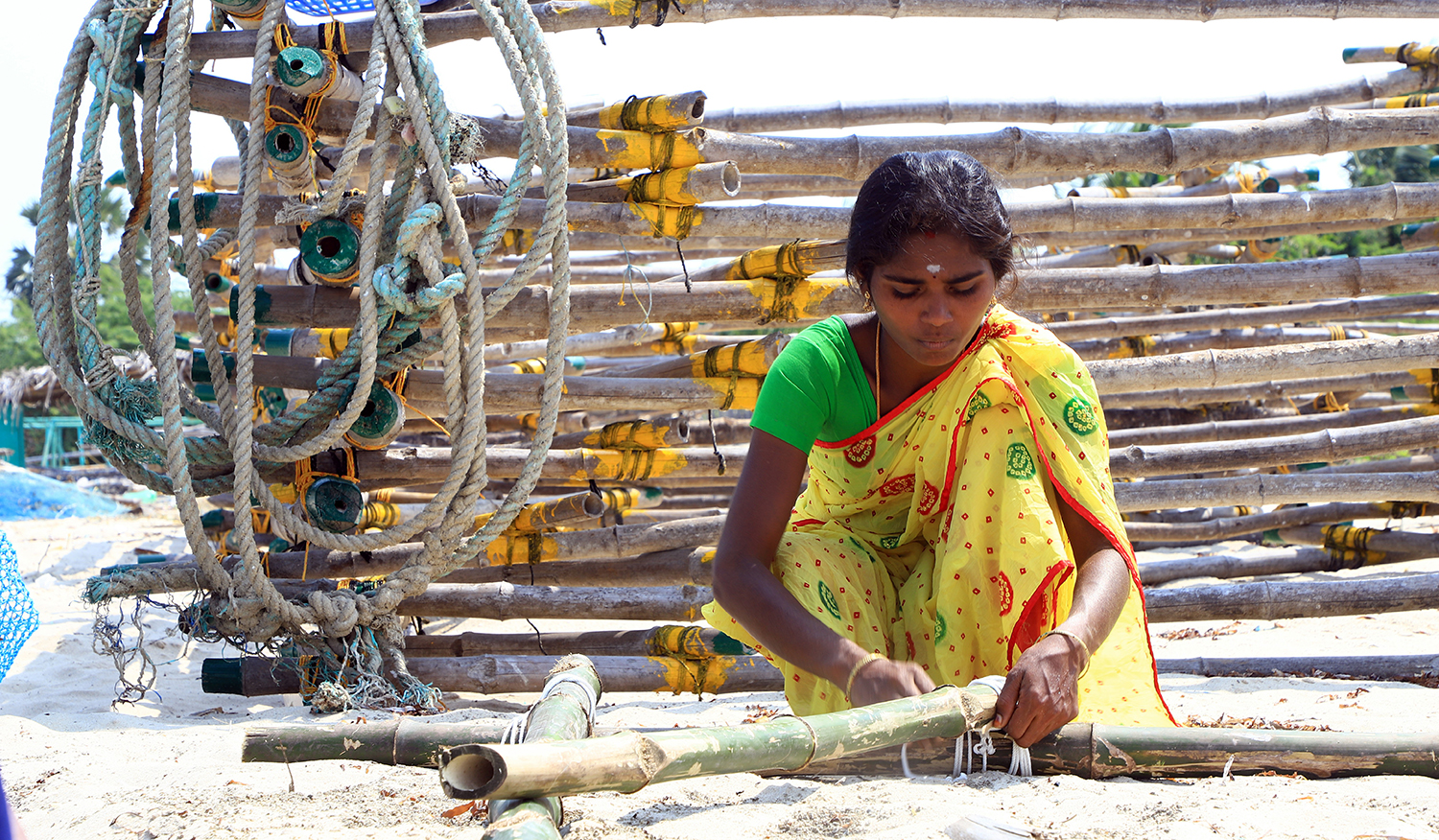
‘I see the future of seaweed farming in India’
In November 2021, Gabriella D’Cruz, a marine conservationist, set up Goa’s first pilot project on seaweed farming. Together with EcoNiche Consultancies, D’Cruz designed a seaweed farm on the border of Goa and Karnataka, due to the presence of natural seaweed beds in the area and a local partner who was potentially interested in supporting the project. The farm was a simple design of three bamboo rafts attached to a sandy substrate by eight helical anchors. Locally available Gracilaria species were grown on the rafts, while trials were conducted with long lines and a net bag method. The aim was to offer an alternative source of income to fishing communities, but sadly, the project ended in March 2022.
“The seaweed grew slowly and there were disease outbreaks before harvest,” said D’Cruz. “We didn’t have any lab support and could not ascertain the disease that eventually killed off the seaweed. We have since decided to conduct a feasibility report to study the ideal locations, species and methods for farming seaweed before we pilot another farm and get more funding and research support before further trials.”
Despite the closure of her project, D’Cruz believes that seaweed farming has much scope in India. Since most of it takes place within shallow bay areas, she says, it becomes primarily an activity undertaken by artisanal fishers. This means that the fishing communities have stake over that section of the coast and can be custodians of the area. It can also be taken up by women, who are actively engaged with the processing and sale of fisheries products and could be trained as seaweed farmers and processing managers to process and sell their own seaweed products.
“I see the future of seaweed farming in India to be farms set up by coastal communities and products processed and sold to high-value markets by community members so that their income grows along with the seaweed industry,” said D’Cruz.
As for Goa, D’Cruz describes it as a good testing ground for innovation in the seaweed space with a confluence of scientists, ecologists, fishing communities and tech entrepreneurs who could all work together. Seaweed farming can also be a viable addition to Goa’s fishing activities.
“If fishing communities are incentivized to get into seaweed farming and processing, they can get a higher share of the profits along the supply chain and it won’t be just another livelihood scheme that limits what the community can do,” she said. “Rather, it can encourage their entrepreneurial side. I also feel that seaweed farming favors artisanal fishers who tend to be from Goa, having lived along certain sections of the coast for generations. This allows the section of coast to remain within the guardianship of the artisanal fishers instead of it being allocated to industrial activities that might be in conflict with the needs of the fishing community.”
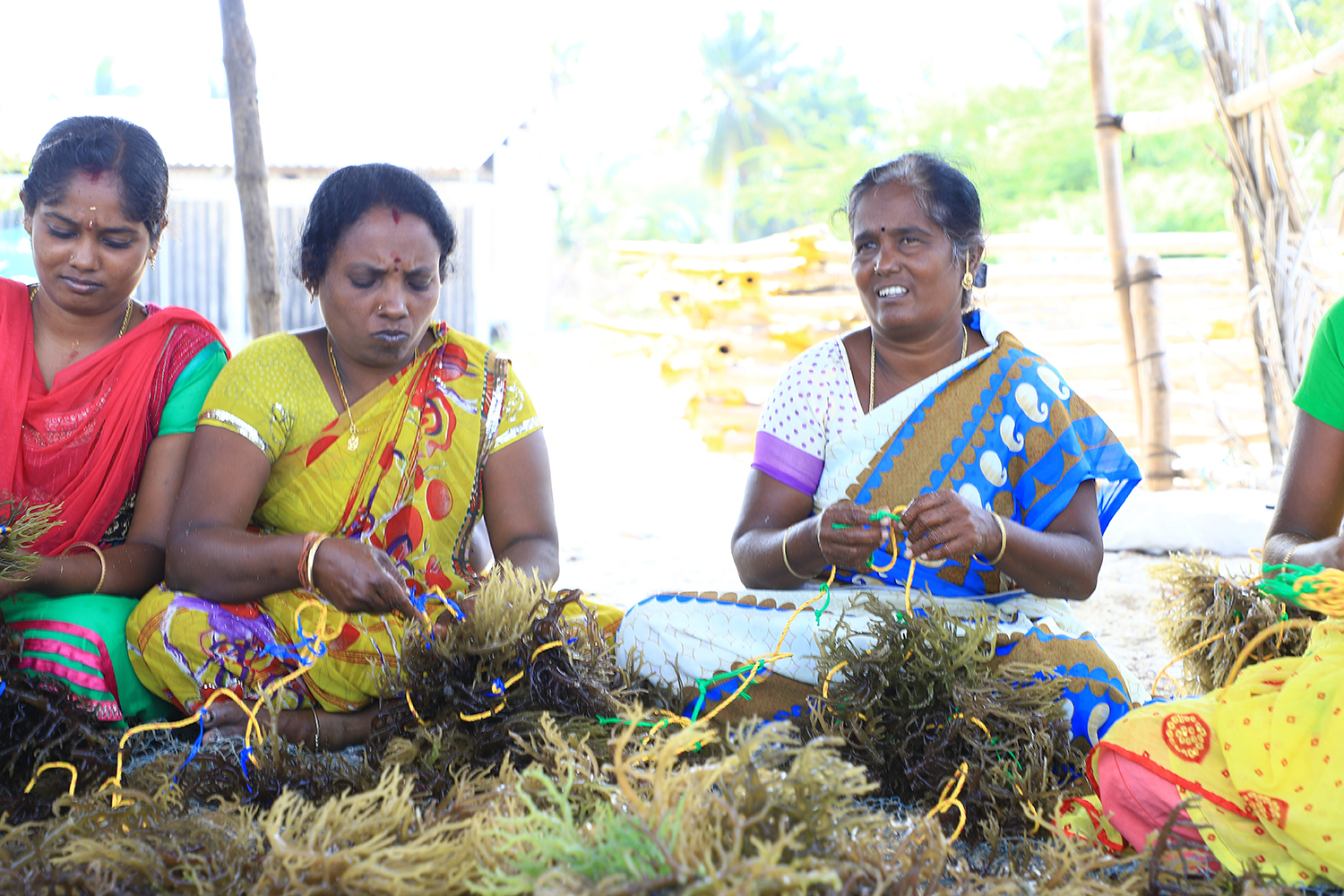
Sowing the seeds of tomorrow
Despite its promise, farming seaweed in Goa requires a lot of awareness programs and capacity building to develop as a major sector, says Foncesa.
“We are seeing increasing constraints on land due to the construction of houses and buildings and less agriculture,” she said. “As a result, farming at sea is an advantage. However, we need to conduct trials that prove that seaweed farming can work, and develop a market where seaweed products can be sold.”
In Tamil Nadu, southern India, this type of initiative has been underway for the past year. Grow-Trees.com is a social enterprise with 13 years of experience in afforestation across 23 states in India. In 2022, it turned to the ocean to diversify its impact and set up a pilot project to support coastal communities in Tamil Nadu by helping them farm the seaweed Kappaphycus alvarezii. The goal is to make community members more self-sufficient by providing farming equipment, such as bamboo rafts, nets and seedlings.
[Farming Sargassum] would positively impact the mindset of fishermen, especially if they are struggling with challenging working conditions or low catches.
“The communities sell their seaweed to a local buyer, who then sells it to the medical industry, food or pharma companies and any other industry that uses seaweed in its products,” said Ganesh Narayan, senior manager of business development at Grow-Trees. “The project has also enabled women to add an additional income to households where a primary income from fishing may not be sufficient to sustain a family.”
A short harvest cycle of 45 days is helpful for marginalized communities to sell their harvest at more than INR 40 per kilogram (U.S. $0.50 per pound) of produce. In a single raft, 154 pounds of seedlings can be sowed. After 45 days, 507 pounds of wet seaweed can be harvested, out of which around 132 pounds is kept for re-cultivation and around 37 pounds (dried seaweed) is sold in the market.
In 2022, Grow-Trees generated employment for 20 families that benefitted with an additional income of around (U.S.) $8,800 a year. In 2023, it plans to support 70 families, enabling them to earn up to $31,000.
“In a matter of 45 days, seaweed can fetch money,” said Narayan. “That is a huge incentive for these communities, as are the low maintenance requirements of seaweed farming.”
It can also help fishing communities to earn when fishing output becomes sporadic and unreliable, says Narayan. But fishing can also have good profit margins and has been carried out for many years in Tamil Nadu, so the key is to create an infrastructure for fishing communities to add income, rather than provide a substitute to fishing.
A race to reap the seaweed rewards
The global demand for seaweed has been expanding steadily, and the commercial seaweed market is expected to surpass (U.S.) $95 billion by 2027. In India, while the seaweed market is small, the country has the potential to produce around 9.7 million tons per year. The Central Marine Fisheries Research Institute (CMFRI), which is affiliated with the Indian Council of Agricultural Research (ICAR), says that India could be a major contributor to global seaweed production. In fact, the government intends to invest around (U.S.) $86.6 million to increase seaweed production to 1 million tons a year by 2025. Following in the footsteps of other seaweed-producing nations like China and Japan, India is entering the race to reap the benefits of a highly valued commodity.
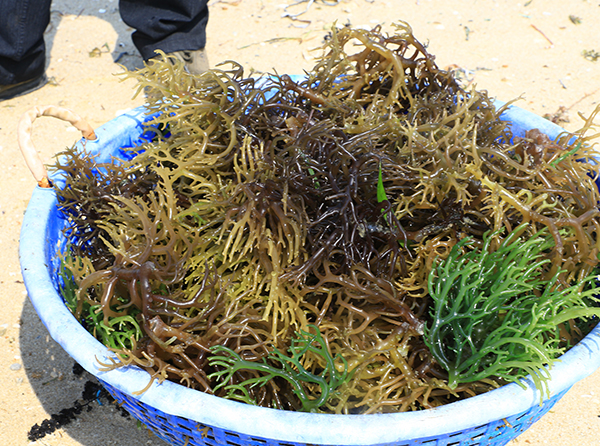
Grow-Trees is helping fishing communities see that farming seaweed can offer a viable revenue stream. If their work becomes more widespread, Fonseca hopes that Goa will also, one day, see the benefits.
“A species like Sargassum has very high levels of alginate, from which it’s possible to produce gelling, stabilizing and thickening agents for food, paper or textiles industries,” she said. “Goa depends on other countries to obtain these, but farming Sargassum would change this. It would also positively impact the mindset of fishermen, especially if they are struggling with challenging working conditions or low catches.”
However, D’Cruz said investments in farm technology will be needed, which should include hatcheries so “we can switch from just farming seaweed by fragmentation to establish more genetically robust farms that are fed by seedlings from hatcheries.”
“Establishing connections between seaweed researchers and businesses will also stimulate the farming industry as new markets can call for new seaweed species to be farmed,” said D’Cruz. “We would also require policies that consider the needs and rights of coastal communities to ensure that profits from seaweed farming are shared by community members, not determined by large businesses.”
Follow the Advocate on Twitter @GSA_Advocate
Now that you've reached the end of the article ...
… please consider supporting GSA’s mission to advance responsible seafood practices through education, advocacy and third-party assurances. The Advocate aims to document the evolution of responsible seafood practices and share the expansive knowledge of our vast network of contributors.
By becoming a Global Seafood Alliance member, you’re ensuring that all of the pre-competitive work we do through member benefits, resources and events can continue. Individual membership costs just $50 a year.
Not a GSA member? Join us.
Author
-

Bonnie Waycott
Correspondent Bonnie Waycott became interested in marine life after learning to snorkel on the Sea of Japan coast near her mother’s hometown. She specializes in aquaculture and fisheries with a particular focus on Japan, and has a keen interest in Tohoku’s aquaculture recovery following the 2011 Great East Japan Earthquake and Tsunami.
Tagged With
Related Posts
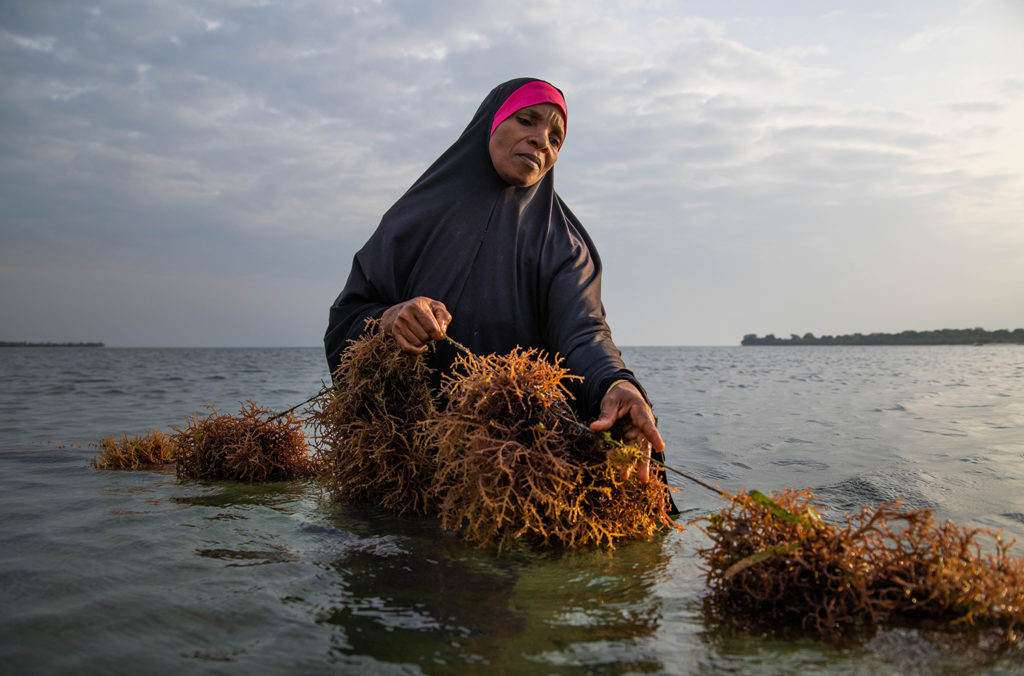
Responsibility
For seaweed farmers in Zanzibar, a chance for real growth
For many Zanzibari women, seaweed farming provides opportunity, but hardships are common. A project from The Nature Conservancy lends hope.
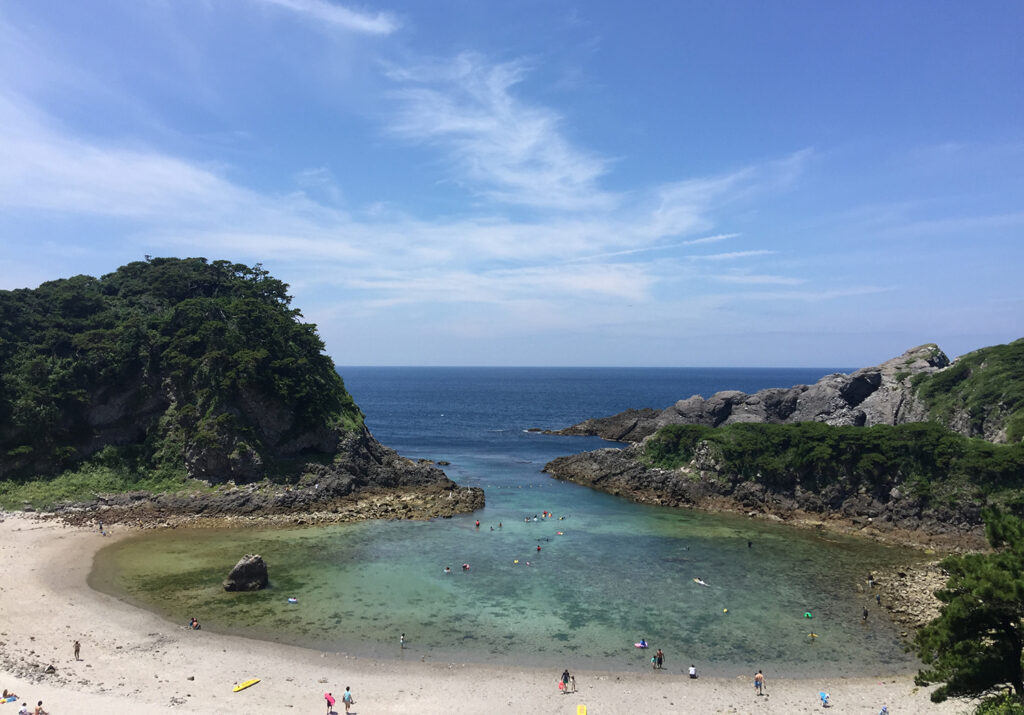
Responsibility
Is a Japanese volcano offering us a sneak preview of ocean acidification?
Shikinejima is a scenic getaway for tourists but the seas surrounding its volcano offer a glimpse of how the ocean could behave in the future.
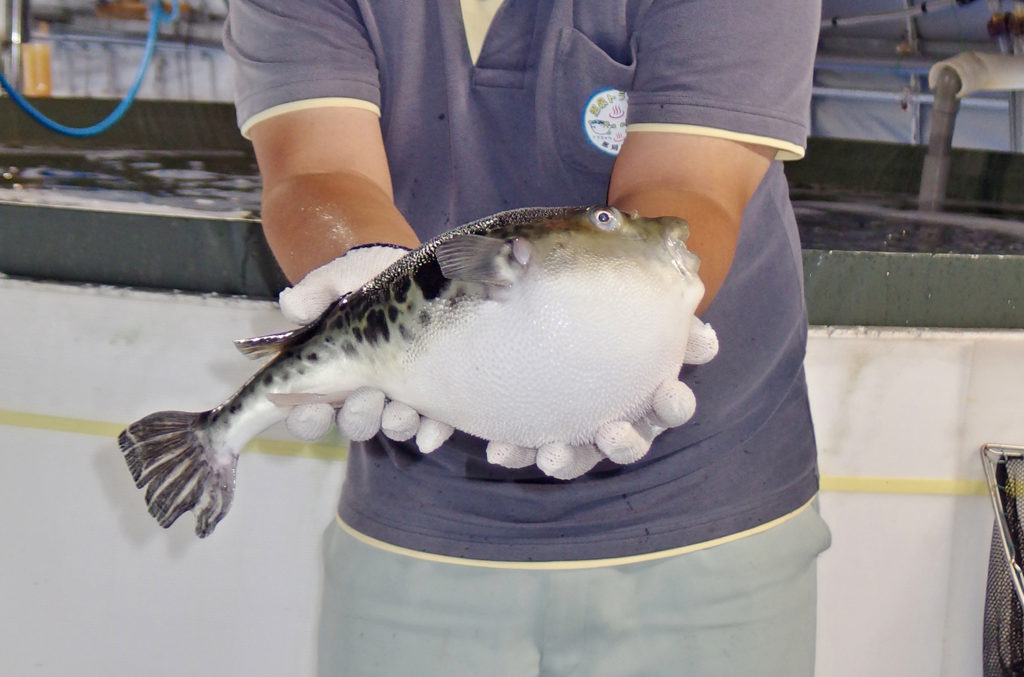
Intelligence
In Japan, tiger puffers find themselves in hot water
A technique to farm tiger puffers in hot spring water was invented to revitalize the town of Nasu-karasuyama and is now spreading to other areas of Japan.
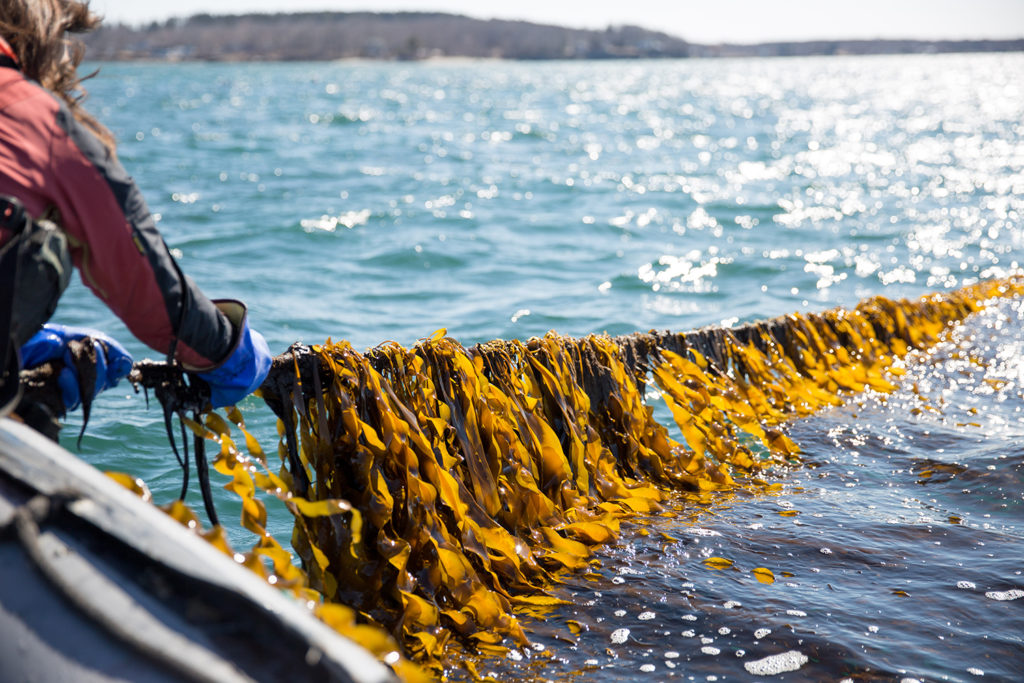
Intelligence
Kelp is the climate-friendly crop that could
Kelp aquaculture is poised for growth on both U.S. coasts, but one grower network in Maine is building a brand and demand for domestic seaweed.


